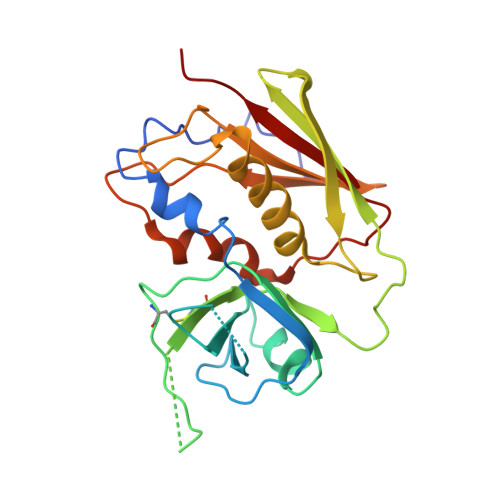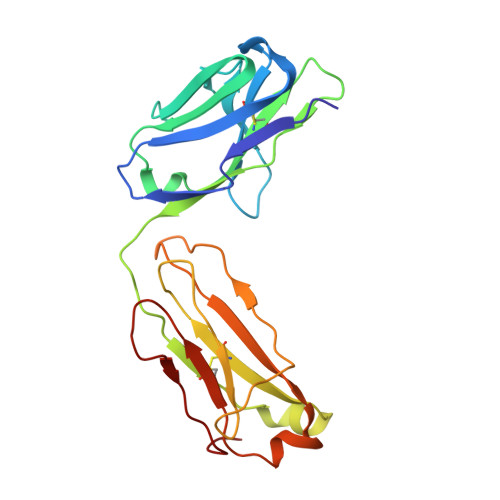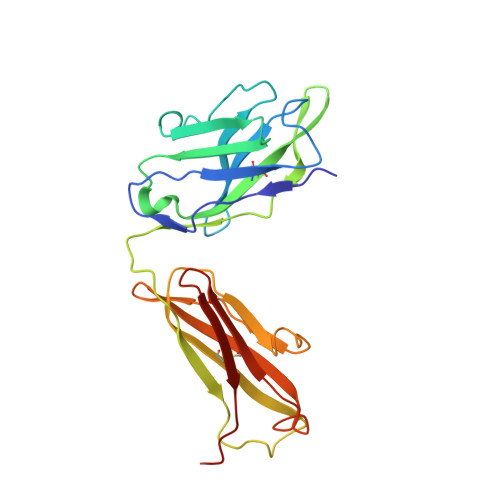Structural basis for the neutralization and specificity of Staphylococcal enterotoxin B against its MHC Class II binding site.
Xia, T., Liang, S., Wang, H., Hu, S., Sun, Y., Yu, X., Han, J., Li, J., Guo, S., Dai, J., Lou, Z., Guo, Y.(2014) MAbs 6: 119-129
- PubMed: 24423621
- DOI: https://doi.org/10.4161/mabs.27106
- Primary Citation of Related Structures:
3W2D - PubMed Abstract:
Staphylococcal enterotoxin (SE) B is among the potent toxins produced by Staphylococcus aureus that cause toxic shock syndrome (TSS), which can result in multi-organ failure and death. Currently, neutralizing antibodies have been shown to be effective immunotherapeutic agents against this toxin, but the structural basis of the neutralizing mechanism is still unknown. In this study, we generated a neutralizing monoclonal antibody, 3E2, against SEB, and analyzed the crystal structure of the SEB-3E2 Fab complex. Crystallographic analysis suggested that the neutralizing epitope overlapped with the MHC II molecule binding site on SEB, and thus 3E2 could inhibit SEB function by preventing interaction with the MHC II molecule. Mutagenesis studies were done on SEB, as well as the related Staphylococcus aureus toxins SEA and SEC. These studies revealed that tyrosine (Y)46 and lysine (K)71 residues of SEB are essential to specific antibody-antigen recognition and neutralization. Substitution of Y at SEA glutamine (Q)49, which corresponds to SEB Y46, increased both 3E2's binding to SEA in vitro and the neutralization of SEA in vivo. These results suggested that SEB Y46 is responsible for distinguishing SEB from SEA. These findings may be helpful for the development of antibody-based therapy for SEB-induced TSS.
- International Joint Cancer Institute; Second Military Medical University; Shanghai, P.R. China; College of Pharmacy; Liaocheng University; Liaocheng, P.R. China.
Organizational Affiliation:



















